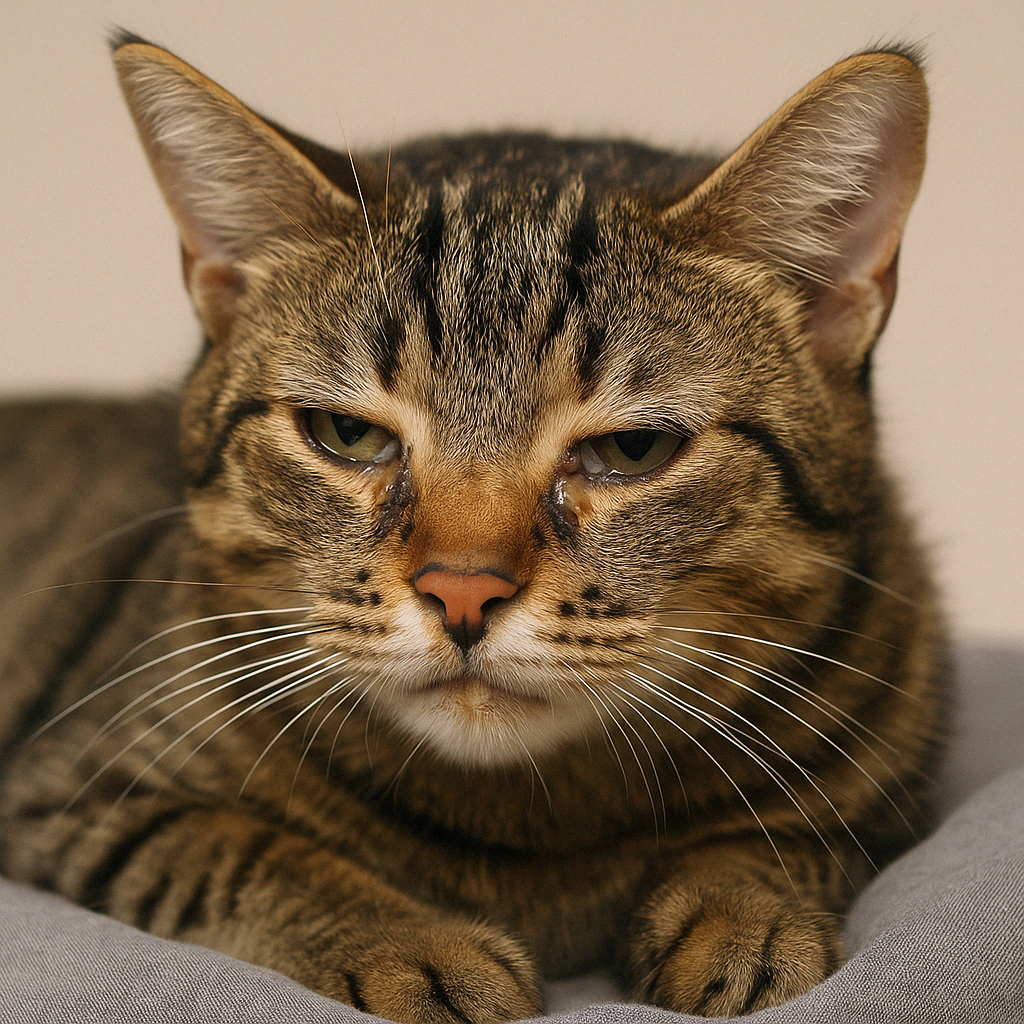What Are Feline Respiratory Diseases?
Feline respiratory diseases refer to infections and conditions that affect a cat’s nose, throat, and lungs. These diseases can range from mild colds to severe pneumonia, impacting a cat’s overall health if not treated promptly. Most respiratory illnesses in cats are infectious, but allergies and chronic conditions can also play a role.
Common feline upper respiratory infections are particularly prevalent among kittens, shelter cats, and cats with weakened immune systems.

Common Causes of Respiratory Illnesses in Cats
Key Viral and Bacterial Infections
Several pathogens are responsible for common respiratory diseases in cats:
- Feline Herpesvirus (FHV-1): A leading cause of chronic rhinitis in cats.
- Feline Calicivirus (FCV): Known for causing ulcers in the mouth and severe respiratory symptoms.
- Chlamydia felis: Causes conjunctivitis and respiratory issues.
- Bordetella bronchiseptica: Bacterial infection, often seen in shelters.
Each of these can be worsened by secondary bacterial infections, leading to complications.
Recognizing Early Symptoms of Respiratory Diseases
Identifying early signs of cat respiratory illness can make a significant difference in outcomes. Watch for:
- Sneezing and nasal discharge
- Watery eyes or conjunctivitis
- Coughing or labored breathing
- Loss of appetite and lethargy
- Fever and dehydration
🔗 Related: Understanding Kittenhood: Development & Behavior (to learn why kittens are more vulnerable)
Cats suffering from feline upper respiratory infections may also show excessive vocalization.
🔗 Related: Why Is My Cat Meowing So Much
Home Care vs. Veterinary Treatment: What You Should Know
At-Home Care Tips for Mild Cases
If symptoms are mild, owners can manage care at home:
- Humidify the Environment: Use a humidifier to ease breathing.
- Ensure Proper Hydration: Encourage drinking water.
- Appetite Stimulation: Offer smelly, wet food to entice eating.
- Clean Nasal Discharge: Gently wipe away mucus with a warm cloth.
When a Vet Visit Is Urgent: Red Flags
Seek veterinary treatment for feline respiratory disease if your cat shows:
- Persistent coughing or wheezing
- Severe loss of appetite
- Signs of dehydration (dry gums, sunken eyes)
- Difficulty breathing (open-mouth breathing)
🔗 Related: When to Visit the Vet: Signs Your Cat Needs Immediate Attention
Veterinarians may prescribe antibiotics, antivirals, or supportive therapies such as fluids and oxygen.
Preventive Measures to Protect Your Cat’s Respiratory Health
How Vaccination Helps in Prevention
Vaccines are crucial in preventing many forms of respiratory infections:
- Core vaccines include protection against Feline Herpesvirus and Calicivirus.
- Booster shots are necessary to maintain immunity, especially in multi-cat households.
🔗 Related: How to Treat Your Kitten in the First Three Months (for early vaccination and care tips)
Best Practices for Respiratory Care for Kittens and Adults
- Maintain Good Hygiene: Regularly disinfect bedding, bowls, and litter boxes.
- Limit Exposure: Minimize contact with sick animals.
- Strengthen Immunity: Provide a balanced diet and stress-free environment.
Chronic illnesses, such as diabetes, can complicate respiratory issues.
🔗 Related: Understanding Feline Diabetes
Quick Tips Box: Keeping Your Cat’s Breathing Healthy
- Keep your cat indoors during outbreaks.
- Use air purifiers to reduce allergens.
- Avoid smoking or using strong chemicals around your cat.
- Monitor weight and hydration regularly.
- Schedule routine vet visits and vaccinations.
FAQ: Feline Respiratory Diseases
Q: Is feline respiratory disease contagious to humans?
A: No, most feline respiratory infections are species-specific and not transmissible to humans.
Q: Can a cat recover from an upper respiratory infection without antibiotics?
A: Mild cases often resolve with supportive care at home, but bacterial infections may require antibiotics.
Q: How long does a cat upper respiratory infection last?
A: Most infections clear within 1-2 weeks, but chronic carriers of viruses like FHV-1 may have lifelong symptoms.
Final Thoughts
Recognizing and addressing feline respiratory diseases early can ensure a smoother recovery and better long-term health for your cat. Whether through home remedies for feline upper respiratory diseases or professional veterinary care, staying proactive is key. Remember, prevention through vaccination, good hygiene, and minimizing stress makes a significant difference in your cat’s respiratory wellness.
Explore More: Understanding Kittenhood: Development & Behavior | How to Treat Your Kitten in the First Three Months | Why Is My Cat Meowing So Much
